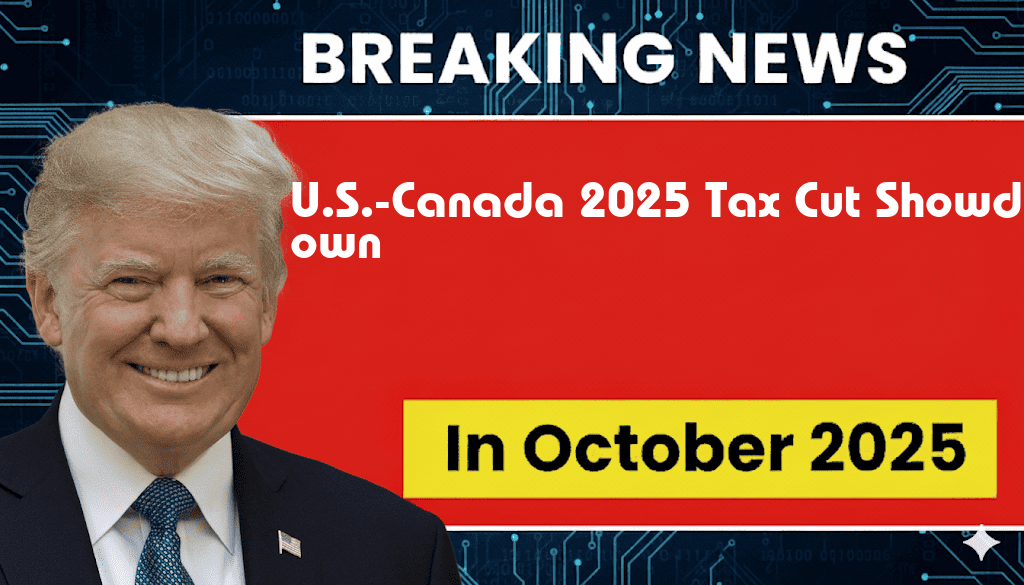Tax Cut Comparisons: U.S. vs. Canada in 2025
The tax landscape for 2025 is shaping up to be a pivotal year for both the United States and Canada, as both countries propose significant tax cuts aimed at stimulating economic growth. In the U.S., the proposed tax cut stands at $3,752 per taxpayer, while Canada is eyeing a more substantial reduction of C$5,200. As each nation grapples with economic challenges, these tax cuts have substantial implications for citizens and the broader economic environment. This article delves into the details of these tax proposals, their potential impacts, and the political backdrop influencing these decisions.
Overview of Proposed Tax Cuts
The contrasting amounts of the proposed tax cuts reflect differing economic strategies and fiscal policies between the two nations. The U.S. tax cut is part of a broader initiative designed to enhance disposable income for middle-class families, while Canada’s larger cut aims to stimulate spending and investment across various sectors.
Breakdown of Tax Proposals
| Country | Proposed Tax Cut | Target Audience | Economic Goal |
|---|---|---|---|
| United States | $3,752 | Middle-class taxpayers | Increase disposable income |
| Canada | C$5,200 | All taxpayers | Stimulate economic growth |
Political Context and Implications
The political backdrop for these tax proposals is crucial for understanding their potential impact. In the U.S., the proposed cuts come amidst a divided Congress, where support for tax policy changes is often contentious. The Biden administration has positioned these cuts as essential for bolstering the economy post-pandemic, especially as inflationary pressures remain a concern. Additionally, the administration argues that these measures will help lower the overall cost of living for American families.
Conversely, Canada’s tax cuts are being presented by Prime Minister Justin Trudeau’s government as a means to provide immediate relief to citizens facing rising costs due to inflation. The Canadian government anticipates that these cuts will not only enhance consumer spending but also encourage investment in local businesses, thereby fostering a more robust economy.
Potential Economic Impact
Both nations are banking on the effectiveness of these tax cuts to drive economic growth. Analysts suggest that the U.S. cut, while smaller in nominal terms, could lead to significant changes in consumer behavior, especially among middle-income families. Increased disposable income is expected to translate into higher spending on goods and services, which could benefit many sectors of the economy.
In Canada, the larger C$5,200 cut is projected to have a more pronounced effect on the overall economic environment. By providing a more substantial financial cushion, the Canadian government hopes to stimulate both consumer spending and business investment, which are crucial for a sustained economic recovery.
Public Reception and Future Considerations
The reception of these tax proposals has been mixed in both countries. In the U.S., some citizens express skepticism regarding the efficacy of tax cuts, citing concerns about the potential for increased government debt and deficits. Meanwhile, supporters argue that the immediate economic relief is necessary given current inflationary pressures.
In Canada, public opinion appears largely favorable towards the proposed cuts, though there are calls for a more comprehensive approach to address long-term economic challenges, including housing affordability and healthcare access. The Canadian government’s challenge will be to balance short-term relief with sustainable fiscal policies.
Conclusion
As 2025 approaches, the tax cut proposals from the U.S. and Canada will be closely watched by economists, policymakers, and citizens alike. The differing amounts and approaches reflect not only the economic strategies of each country but also the political realities they face. The outcomes of these tax cuts could set the stage for future economic policies and the financial well-being of millions of taxpayers.
For further reading on the implications of tax cuts, visit Wikipedia on Tax Cuts or check out Forbes on Tax Cuts in 2025.
Frequently Asked Questions
What is the main focus of the article “U.S. vs. Canada: A 2025 Tax Cut Showdown”?
The article discusses the upcoming tax cuts in both the U.S. and Canada for the year 2025, comparing the proposed tax savings of $3,752 in the U.S. to C$5,200 in Canada.
How do the tax cuts in the U.S. and Canada compare in terms of monetary value?
In the U.S., the tax cut is projected to be $3,752, whereas in Canada, the proposed tax relief amounts to C$5,200. This highlights a significant difference in tax cut values between the two countries.
What factors might influence the effectiveness of the tax cuts in both countries?
Several factors can influence the effectiveness of these tax cuts, including economic conditions, government spending, and public services available in both the U.S. and Canada, which can impact how much citizens benefit from these cuts.
Are there any specific demographics that will benefit more from these tax cuts?
The article indicates that certain demographics, such as low- and middle-income families, may benefit more from these tax cuts, as they often rely more heavily on disposable income and tax rebates.
What implications could the tax cut showdown have on future U.S.-Canada relations?
The tax cut showdown could have implications on U.S.-Canada relations, particularly in terms of economic competition and how each country addresses tax policies and fiscal responsibility moving forward.
